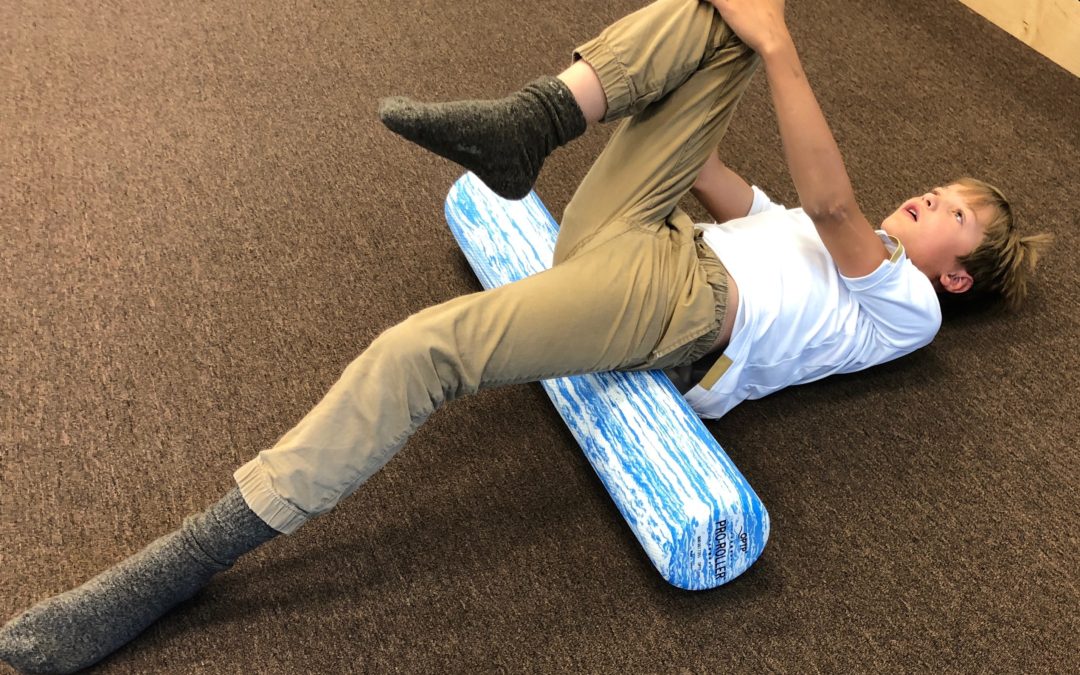Professional athletes improve their performance by using foam rollers and other fascial release devices all the time, young athletes can also benefit. Self myofascial release involves applying gentle sustained pressure into fascial connective restrictions and holding that pressure for a period of time. Eventually releases occur and range of motion is restored. For athletes looking for that extra edge, less pain and greater mobility, foam rolling can help increase performance!
What is fascia?
Fascia is a densely woven covering interpenetrating every muscle, bone, nerve, artery, vein, and each internal organ. It is a head to toe, inside to out, all-encompassing and interwoven system of fibrous, collagen rich, connective tissue found throughout the body. Each part of the body is connected to every other part by this fascial system. Your skull is literally connected to your toes.
This helps us understand why when something happens to one part of the body it affects every other part of the body in one way or another and in varying degrees of intensity. This is how compensation patterns can begin. Often in the fascial world, the example of wearing a tightly knit full body sweater is used to illustrate our fascia. If you tug on one end of the sweater, you see the tug travel long distances to other ends of the sweater. For athletes, the best way to avoid compensatory patterns is to make sure to keep your fascia smooth, supple and hydrated.
How does foam rolling improve performance?
Foam rollers can be used for postural corrections, stretching, balance and core work in addition to releasing fascia. When muscles are functioning normally they are ready to perform in a split second. Foam rollers and other fascial release tools can help release restrictions that otherwise might continue to lock into place and thus inhibit proper function and movement. Finding your restrictions is key. I always tell clients at Bend Pilates we are just as individual on the inside as we are on the outside. So, tune into where you might have pain, discomfort, or scar tissue build up. Then gently apply pressure from a foam roller, or other fascial release tool into that restriction and wait until a certain amount of time goes by or you feel a release occur. Then move a little and find the next spot, sometimes this move may only be a half a millimeter. Regardless of whether you feel a release happen or not, after sinking into one location for a minimum of 90 seconds up to two minutes, a release occurs. Just because they are rollers and balls doesn’t mean you need to move and roll. Holding is key. When training or competing, your muscles can become tight and sore. Foam rolling helps with blood flow and recovery as well, in this instance you can roll.
Here are two examples of athletes using foam rollers:
Gavin is a cyclist and spends a lot of time riding in the drops. Putting a foam roller at his upper back and allowing him to melt over it can help with posture. This extends his thoracic spine, opposite of what he experiences in the saddle. Another way for Gavin to counter all those hours on his bike and get a good fascial stretch across the chest is to lay on the roller lengthwise with his arms out to the side. ![]()
![]()
Tanner is a soccer player, so his hamstrings and hip flexors can become tight from running and kicking. Here he is pictured opening his hips. Also, pressure of the roller on his glutes can release tissue there.

